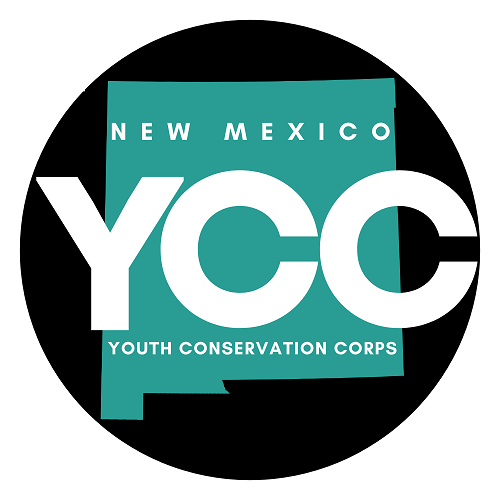December 20, 2021
By Lyndsey Slavik
Having graduated college majoring in conservation biology in April and moved to Santa Fe in July of 2021, I saw the application for being a part of the New Mexico Youth Conservation Corps (NMYCC) for the Randall Davey Audubon Center when browsing their website. I was shocked to not have known about the NMYCC – a summer employment program that employs young people to engage with community and conservation work in various outdoor settings. I was so fortunate to be hired as a NMYCC Crew Lead, and over the past six months, it has been the most enriching experience working on projects at the Randall Davey Audubon Center (RDAC), the Santa Fe Botanical Garden (SFBG), and the Leonora Curtin Wetland Preserve (LCWP). For the summer season, our crew consisted of Brandon Stewart, Melanie Solis, Amanda Rudolph, Joaquin Gomez, and Shoki Bundy. Our main projects consisted of trail work and erosion mitigation at the Randall Davey Audubon Center, native habitat restoration at the Leonora Curtin Wetland Preserve, and facilitating the Northern New Mexico Master Naturalist Program.
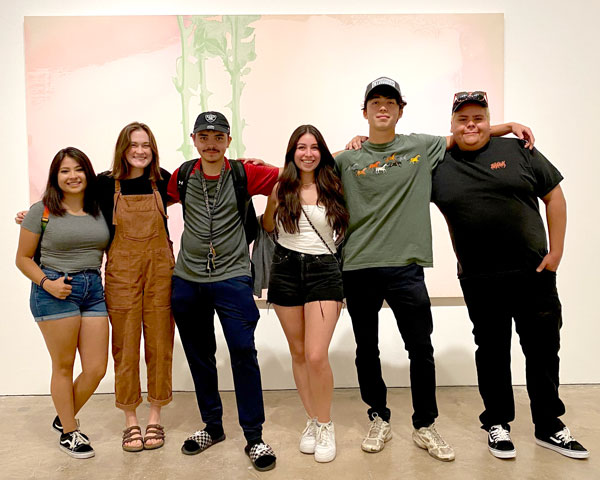
From left to right: Melanie, Lyndsey, Brandon, Amanda, Shoki, and Joaquin at SITE Santa Fe.
During the summer months at the Leonora Curtin Wetland Preserve (LCWP), owned by El Rancho de las Golondrinas, we focused on the removal of invasive plant species. The habitat of the LCWP is classified as a ciénega, or marsh, and is home to many native plant, insect, bird, and mammal species. We received training and guidance from Yvonne Hickerson at the Institute of Applied Ecology, gaining native and invasive plant species identification skills and learning the best methodologies for removing each invasive species. Some of the specific invasive species we focused on removing included kochia (Bassia scoparia), teasel (Dipsacus fullonum), prickly lettuce (Lactuca serriola), houndstongue (Cynoglossum officinale), prickly Russian thistle (Salsola tragus) and slender Russian thistle (Salsola collina). Last year’s NMYCC team did an amazing job of managing these invasive species, and thanks to our hard-working crew this year, we continued to make progress upholding the invasive species management plan at the LCWP from early June to late August. Despite invasive species removal being hard work, we all found ways to make it enjoyable with one another, and it was beautiful to see how the ecology of the LCWP transitioned over the months. Watching the sunflowers sprout up and bloom over the duration of us all working there was beautiful to see and experience!
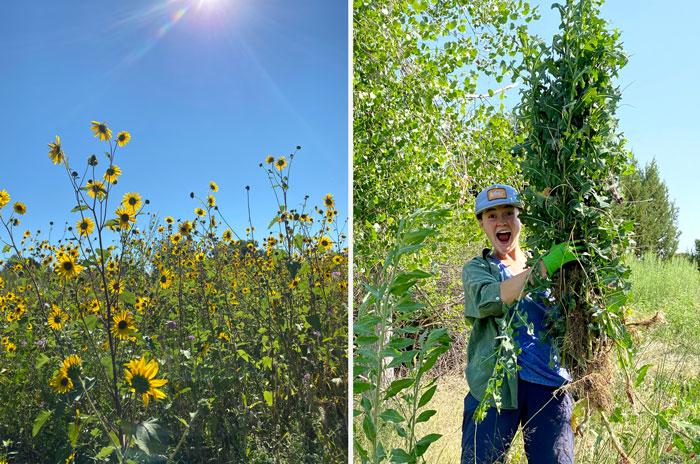
Left: Sunflowers in August at the LCWP. Right: Lyndsey with prickly lettuce (Lactuca serriola).
In Autumn, our wonderful crew members returned to college, and we had two volunteers, Alixandra (Alix) Peters and Julie First join me in habitat restoration work. The fall is where many plants go to seed, so we collected the seeds of native plants, including hairy grama (Bouteloua hirsuta), alkali sacaton (Sporobolus airoides), alkali muhly (Muhlenbergia asperifolia), Canadian wildrye (Elymus canadensis), Fendler’s globemallow (Sphaeralcea fendleri), and Rocky Mountain beeplant (Cleome serrulata) and scattered them in areas of heavy invasive plant removal from the summer. This may have been my favorite part, as it was a very intimate process collecting seeds from these plants and spreading them to encourage the re-establishment of native plants throughout the preserve.
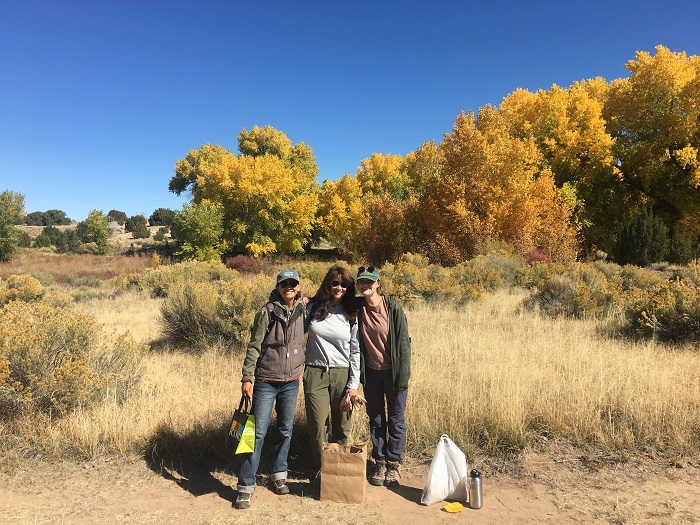
From left to right: Alix, Julie, and Lyndsey in September at the LCWP.
And now, as the summer has transitioned to autumn and winter, my work has involved coordination and facilitation of the Northern New Mexico Master Naturalist Program. This program is hosted through the Santa Fe Botanical Garden, Audubon New Mexico, Santa Fe County Open Space, Parks, and Trails Program, and the New Mexico Youth Conservation Corps (NMYCC). The course currently follows a hybrid model, with lectures and discussions held on Zoom and in-person field trips. The field trips offered this year were incredible, consisting of a Botany trip at the Leonora Curtin Wetland Preserve, a Wildlife tracking trip at Thornton Ranch Open Space, and a Birding field trip at the Randall Davey Audubon Center and Sanctuary. It was lovely to be able to connect with everyone in the course outside of Zoom, and work on our fieldwork skills together! Each week of the course focuses on a different ecological topic to give participants a deeper understanding of the ecology of New Mexico, with an emphasis on environmental stewardship and creating a community of trained volunteers.
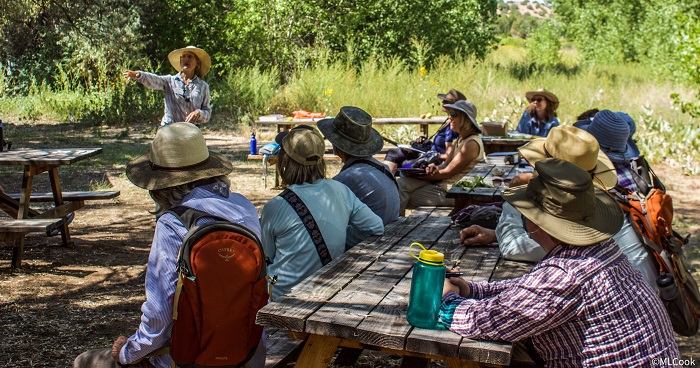
2021 Master Naturalist Participants on the Botany Field Trip at the Leonora Curtin Wetland Preserve (Photo by Mike Cook).
Overall, I could not think of a more rewarding role than working as a New Mexico Youth Conservation Corps Crew leader over the course of the last months. Working with everyone at the Randall Davey Audubon Center, Santa Fe Botanical Garden, and Santa Fe County has allowed me to grow in both personal and professional manners, and I express my gratitude to all these organizations for making my time with NMYCC an experience I could build upon past skills with and grow new ones for the future. And lastly, but most importantly, I want to thank the crew for their hard work, as well as making working fun. These connections to people and the outdoors make this work worthwhile!

